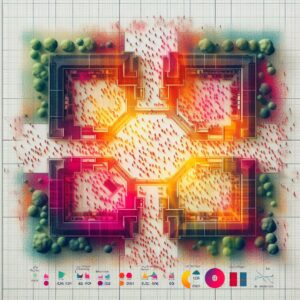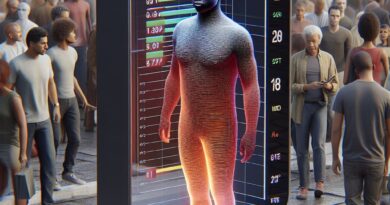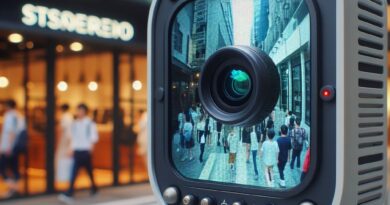The Ultimate Guide to Choosing People Counting Sensors for Museums
In the bustling world of museums, understanding visitor traffic is not just about numbers; it’s about gaining insights into visitor behavior, managing resources efficiently, and enhancing the overall museum experience. People counting sensors play a pivotal role in achieving these goals, but with a variety of options on the market, selecting the right one can be daunting. This guide is designed to navigate you through the process of choosing the best people counting sensors for your museum, ensuring you make an informed decision that aligns with your institution’s needs.
1. Understand Your Objectives
Before diving into the sea of available sensors, it’s crucial to define what you aim to achieve with the data collected. Are you looking to improve exhibit placement based on traffic patterns, manage staffing levels more effectively, or enhance security measures? Your objectives will significantly influence the type of sensor that best suits your museum.
2. Consider the Technology
People counting sensors come with various technologies, including infrared, thermal imaging, video-based, and Wi-Fi tracking. Each has its strengths and limitations. For instance, infrared sensors are cost-effective and good for counting in narrow entrances but might not be as accurate in high-traffic areas. Video-based sensors, on the other hand, offer higher accuracy and can provide additional insights into visitor behavior but come at a higher cost and require more complex installation and maintenance.
3. Accuracy Matters
Accuracy is paramount when selecting a people counting sensor. High-traffic museums require sensors that can accurately count in diverse conditions, including varying light levels, temperatures, and crowded spaces. Video-based and thermal imaging sensors typically offer higher accuracy rates and can differentiate between individuals in groups, making them suitable for busy environments.
4. Evaluate the Data Analysis Capabilities
The value of a people counting sensor is not just in the counting but in the analysis it enables. Look for systems that offer robust data analytics platforms, allowing you to easily interpret the data and make informed decisions. These platforms should offer real-time data access, historical data analysis, and customizable reports that align with your museum’s specific needs.
5. Consider Privacy Concerns
Privacy is a critical consideration, especially with sensors that use video or Wi-Fi tracking. Ensure the technology you choose complies with local privacy laws and museum ethics. Opt for sensors that anonymize data and do not store personally identifiable information.
6. Scalability and Integration
Your chosen solution should be scalable to adapt as your museum grows or changes. It should also integrate seamlessly with other systems, such as HVAC for optimizing climate control based on real-time visitor numbers or security systems for enhanced safety measures.
7. Budget and ROI
While budget constraints are a reality for most institutions, it’s essential to consider the return on investment (ROI) when selecting a people counting sensor. More expensive systems that offer higher accuracy and better data analysis capabilities can lead to significant long-term savings and improvements in museum management and visitor satisfaction.
8. Seek Expert Advice
Lastly, don’t hesitate to consult with experts in the field. Reach out to other museums that have implemented people counting technologies, and learn from their experiences. Additionally, many vendors offer consultations to help you select the best system for your specific needs.
In conclusion, selecting the right people counting sensor for your museum is a critical decision that requires a thoughtful approach. By understanding your objectives, considering the technology, prioritizing accuracy, evaluating data analysis capabilities, addressing privacy concerns, ensuring scalability and integration, considering budget and ROI, and seeking expert advice, you can choose a system that not only meets your current needs but also supports your museum’s future growth and success. With the right people counting sensor in place, you can unlock valuable insights into visitor behavior, optimize resource management, and enhance the overall visitor experience, securing your museum’s position as a dynamic and responsive cultural institution.
- V-Count: V-Count offers a range of people counting solutions tailored to various industries, including museums. Their sensors utilize advanced technologies such as 3D stereoscopic imaging and Wi-Fi tracking to provide accurate foot traffic data.
- Traf-Sys: Traf-Sys specializes in people counting systems designed to meet the unique needs of museums and cultural institutions. Their solutions include both overhead and horizontal sensors, as well as software for comprehensive data analysis.
- RetailNext: While primarily focused on retail analytics, RetailNext’s solutions can also be adapted for museum environments. Their platform integrates various data sources, including people counting sensors, to deliver actionable insights for optimizing visitor experiences.
- Dor Technologies: Dor Technologies offers a cloud-based foot traffic intelligence platform that includes people counting sensors ideal for museums. Their solution provides real-time data and analytics to help museums understand visitor behavior and improve operational efficiency.
- SenSource: SenSource provides customizable people counting solutions suitable for museums of all sizes. Their sensors are designed to withstand challenging environments and deliver accurate data for informed decision-making.






